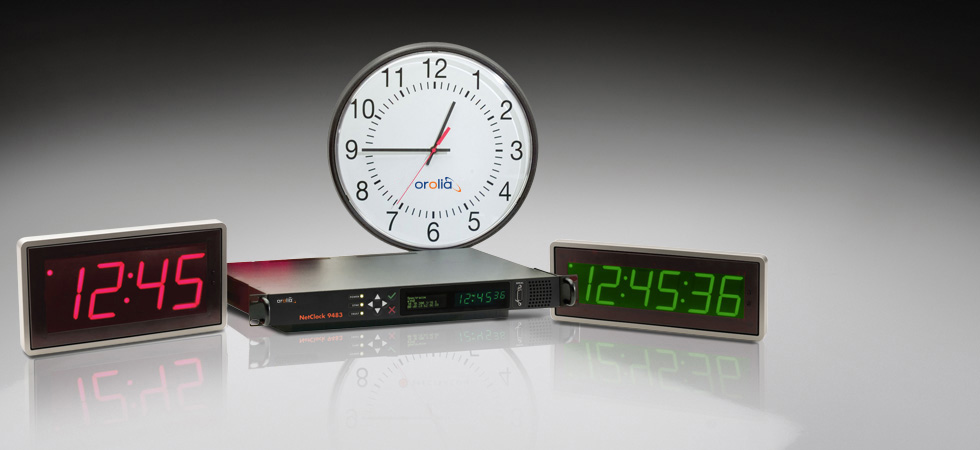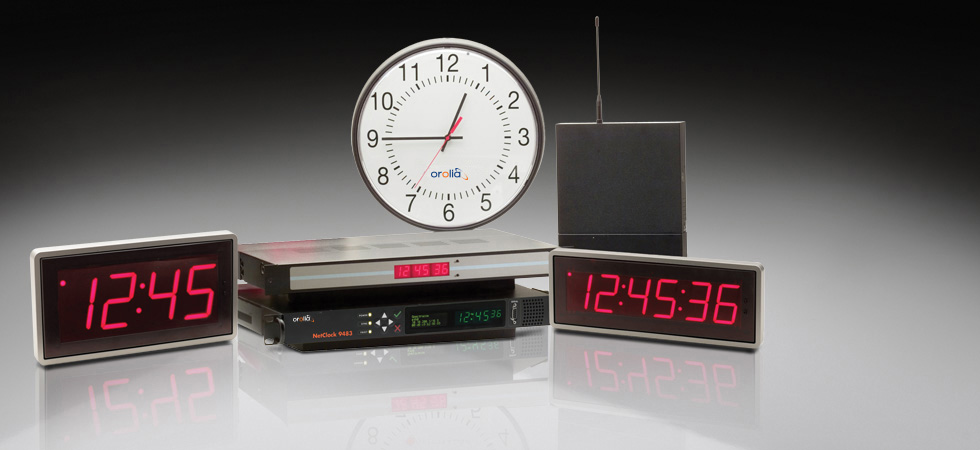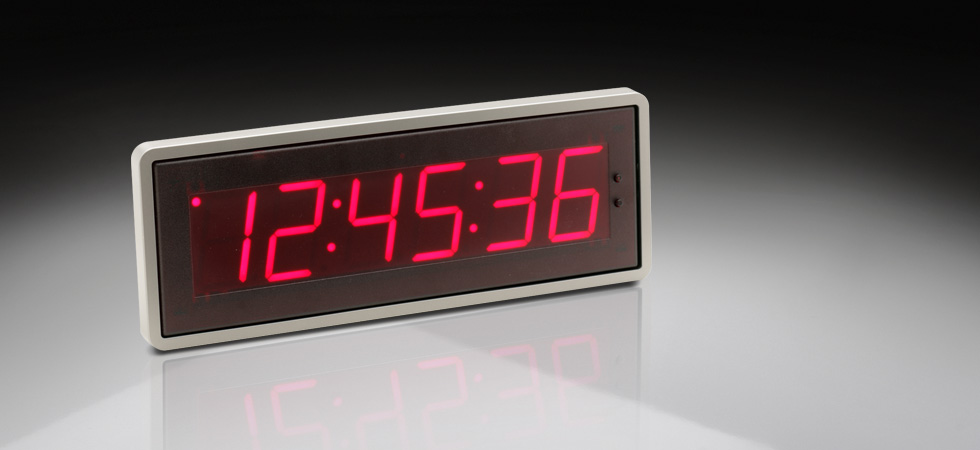Safran Synchronized Display Clocks







Overview
Accurate time is an integral part of a facility's communication system in many industries and applications. Synchronize visual time as well as all other critical timing systems including computer network operations. Two types of display clocks are available. Both utilize NetClock and SecureSync network time servers as the system's master clock.
- IP clocks synchronize directly via network time protocol (NTP) over Ethernet. Clocks are powered by power-over-ethernet. A Ethernet power injector can be used to convert 110/220VAC mains power.
- Wireless clocks are synchronized through a network-based 900 MHz transmitter (unlicensed in North America, but prohibited for public use in Europe, check with local authorities for licensing requirements in other areas). Every clock is also a wireless repeater for an extremely reliable wireless mesh network.
 IP/PoE Clock Details
IP/PoE Clock Details
Safran offers these network-based IP synchronized clocks from Sapling. For ease of installation and management, the display clocks meet the needs of the network-centric evolution of facility infrastructure. It leverages the wired network infrastructure of a facility to allow for reliable clock synchronization over an existing LAN/WAN.
- Power over Ethernet, IEEE802.3af
- 2.5" and 4", 4- and 6-digit clocks
- 12" and 16" analog clocks
- Each clock synchronizes to network time server via network time protocol (NTP)
- Network management through web interface
- Automatic configurable bi-annual daylight savings time/summer time adjustment
- Made in the USA
- E-mail alerts for sync and NTP status updates
- Monitoring software included
Each analog or digital clock acquires an IP address via DHCP, or is configured for a static address. A web browser interface allows easy configuration of time zone, DST/summer time adjustment, and display (digital clocks only). Each clock is configured to receive time from up to 10 network time servers, such as Safran’s SecureSync® or NetClock® GPS network time server, supporting redundancy.
Global monitoring software allows management of all clocks on the network. View the communication status, IP addresses, and elapsed run-time duration for each clock. You can even edit a specific clock’s settings or apply settings to the entire clock system through one location.
The clocks are powered over Ethernet per the IEEE802.3af specification. If the 48 VDC is not available through the network, then a PoE power injector is available to supply power from 110/220 VAC.
 900 MHz Wireless Clock Details
900 MHz Wireless Clock Details
Safran offers a 900 MHz wireless clock system from Sapling for organizations with time-sensitive operations that require simple sync clock installation. The system is compatible with Safran GPS network time servers as a master clock for traceability to UTC (Coordinated Universal Time). Time from the master is broadcast by a wireless transmitter to synchronize displays.
This unique system offers an easy, cost-effective solution for accurate, synchronized time displays without expensive, disruptive installation procedures. Because there are no wiring requirements, install times are drastically reduced, and it is ideal for renovation projects – no need to worry about asbestos issues or in-wall electrical installation work – as well as new construction.
The system uses a rack-mount network-based transmitter with a remote antenna that works much like an IEEE-802.11 wireless router. It receives its time from a network time server via NTP over a network (or from RS-485 from via a twisted pair). It transmits a time signal every minute. Once an analog or digital display clock receives and synchronizes to the signal, it becomes a transmitter, creating a robust and efficient wireless mesh network. Such a system provides significant advantages by improving signal strength and coverage as more clocks are added. The sync signal is transmitted every minute from externally-powered clock and every two hours in normal mode (5 year life) or every four hours in economy mode (8 year life) from battery powered analog clocks.
The system is easily scalable as additional needs develop in the future. In applications across a large campus, two types of repeaters can be used to maintain the signal. One type receives and amplifies a wireless signal from a clock or main transmitter. Another receives a specially-coded sync signal through the network from the main transmitter.
New features include greater clock sensitivity for longer transmission range, enhanced clock diagnostics, and network-manageable transmitter. All new system components are backwards compatible with previous generations.

